Lecture 16 Key Concepts/Terms
0.0(0)
Card Sorting
1/41
Earn XP
Description and Tags
Study Analytics
Name | Mastery | Learn | Test | Matching | Spaced |
|---|
No study sessions yet.
42 Terms
1
New cards
What is the "abominable mystery"?
where complex and specialized structures of angiosperms came from. Perplexed Darwin, How did it happen so fast?
2
New cards
Archaefructus
oldest known angiosperm
extinct
fruits
hermaphroditic
no petals or sepals
extinct
fruits
hermaphroditic
no petals or sepals
3
New cards
Amborella trichopoda
oldest living angiosperm clade from New Caledonia
small shrub or tree
functionally dioecious
very small flowers
small shrub or tree
functionally dioecious
very small flowers
4
New cards
Nymphaeles
fully aquatic
no vessel cells
stomata on one side of leaves
water lillies
no vessel cells
stomata on one side of leaves
water lillies
5
New cards
Astrobaileyales
small group, woody plants
6
New cards
Chloranthaceae
woody group of angiosperms found in tropics, not much known about them
7
New cards
ceratophyllum
group of angiosperm where many float just below the surface of water and help in the ecosystems there; high oxygen production- commonly used in fish tanks and aquariums
8
New cards
magnoliids
trimerous
broad leaves with branching veins
economically important
broad leaves with branching veins
economically important
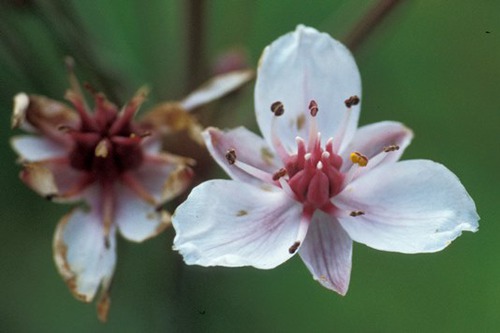
9
New cards
eudicots
two cotyledons
4-5 merous
broad leaves with branched veins
most successful plant lineage
4-5 merous
broad leaves with branched veins
most successful plant lineage
10
New cards
examples of magnoliids
magnolias, nutmeg, avocado
11
New cards
examples of eudicots
roses, violets, cabbage, pea, maple and buttercups
12
New cards
monocots
Flowering plant whose embryos have one cotyledon
13
New cards
examples of monocots
grasses, ginger, tulips, orchids, onions, bananas
14
New cards
pollination syndrome
a set of flower characteristics associated with a particular type of pollinator
15
New cards
what are the two main types of pollination?
biotic and abiotic
16
New cards
pollination vs fertilization
transfer of pollen vs sex
17
New cards
abiotic pollination
pollination by a nonliving agent such as wind, about 20% of pollination
18
New cards
biotic pollination
pollination by living agent such as animals, about 80% of pollination
19
New cards
abiotic pollination: water
aquatic
floating pollen
not water soluble, but still germinates
close together
probably the most ancestral form of pollination
floating pollen
not water soluble, but still germinates
close together
probably the most ancestral form of pollination
20
New cards
abiotic pollination: wind
small flowers
usually flowers are white or pale green
no scent
hanging or standing off plants
usually flowers are white or pale green
no scent
hanging or standing off plants
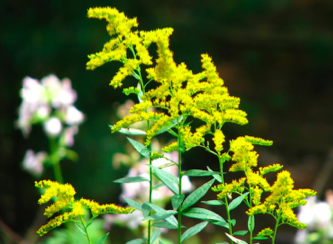
21
New cards
biotic pollination: beetles
white or greenish flowers
large, dish shaped, easily accessible pollen
highly scented
large, dish shaped, easily accessible pollen
highly scented
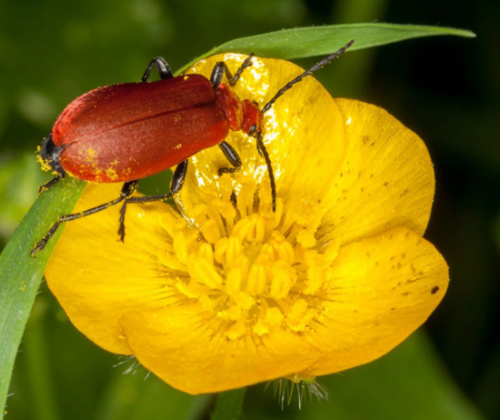
22
New cards
biotic pollination: short-tongued bees and flies
open flowers
exposed pollen
no nectar
small overall size
exposed pollen
no nectar
small overall size
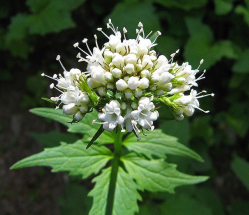
23
New cards
biotic pollination: long-tongued bees
deep flowers with wells for nectar
yellow, purple r blue flowers
larger, more tubular shapes
yellow, purple r blue flowers
larger, more tubular shapes

24
New cards
Bees see flower patterns in what wavelength that humans cannot see?
UV spectrum
25
New cards
biotic pollination: butterflies
open flat or thin tubular flowers
pink or lavender flowers (very "showy")
needs landing area (butterflies cannot hover)
scented
nectar with lots of amino acids
pink or lavender flowers (very "showy")
needs landing area (butterflies cannot hover)
scented
nectar with lots of amino acids

26
New cards
biotic pollination: moths
no landing area needed
nocturnal or crepuscular
white or pale flowers
strongly scented
lots of nectar
nocturnal or crepuscular
white or pale flowers
strongly scented
lots of nectar
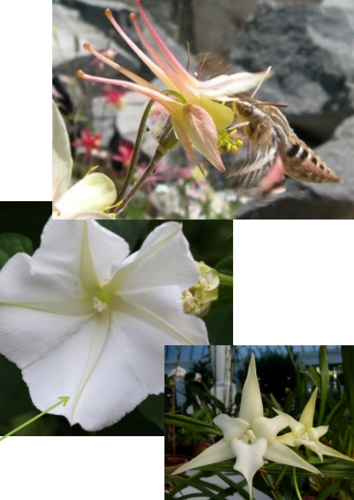
27
New cards
biotic pollination: hummingbirds
large, deep tubular flowers
nectar low in amino acids
red or orange
not scented
nectar low in amino acids
red or orange
not scented
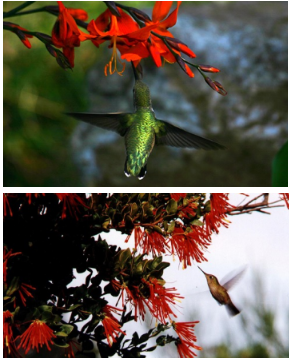
28
New cards
biotic pollination: bats
very large flowers
white or lightly colored flowers
bell-shaped or dangling flowers
nocturnal
very large amounts of nectar
highly scented
white or lightly colored flowers
bell-shaped or dangling flowers
nocturnal
very large amounts of nectar
highly scented
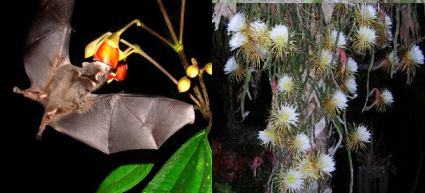
29
New cards
Coevolution of flowers and pollinators
Length of flower stem at the same angle and length as the tongue of the pollinator the plant has co-evolved with.
30
New cards
nectar guide
Patterns (usually in a UV-reactive pigment) that
"guide" insects toward the nectar in a flower
"guide" insects toward the nectar in a flower
31
New cards
UV spectrum and pollination
flowers have adapted their flowers to have nectar guides that are colored based on the UV spectrum of colors that insects see, not based on the visible spectrum of colors that we see; this can make it harder for us to spot some nectar guides
32
New cards
what are the "goals" of flowers through coevolutionary relationships?
get pollen
give pollen
make sure pollinators don't take rewards without getting/giving pollen
give pollen
make sure pollinators don't take rewards without getting/giving pollen
33
New cards
Aristolochaicae (trap flowers)
example of coevolution
34
New cards
what group are water lillies a part of
Nymphaeles
35
New cards
what group is star anise a part of
Austrobaileyales
36
New cards
what flower group are magnolias a part of
magnoliids
37
New cards
what flower group is nutmeg a part of
magnoliids
38
New cards
what flower group are roses a part of
eudicots
39
New cards
what flower group are pea plants a part of
eudicots
40
New cards
what flower group are daffodils a part of
monocots
41
New cards
what flower group are orchids a part of
monocots
42
New cards
As you are walking through the woods, you stumble across a flowering plant with broad leaves with branched veins, and flowers with five petals. With this information, you know it must be which of the following?
A) Monocot
B) Gymnosperm
C) Eudicot
D) Angiosperm
E) It must be both C and D
A) Monocot
B) Gymnosperm
C) Eudicot
D) Angiosperm
E) It must be both C and D
E) It must be both C and D